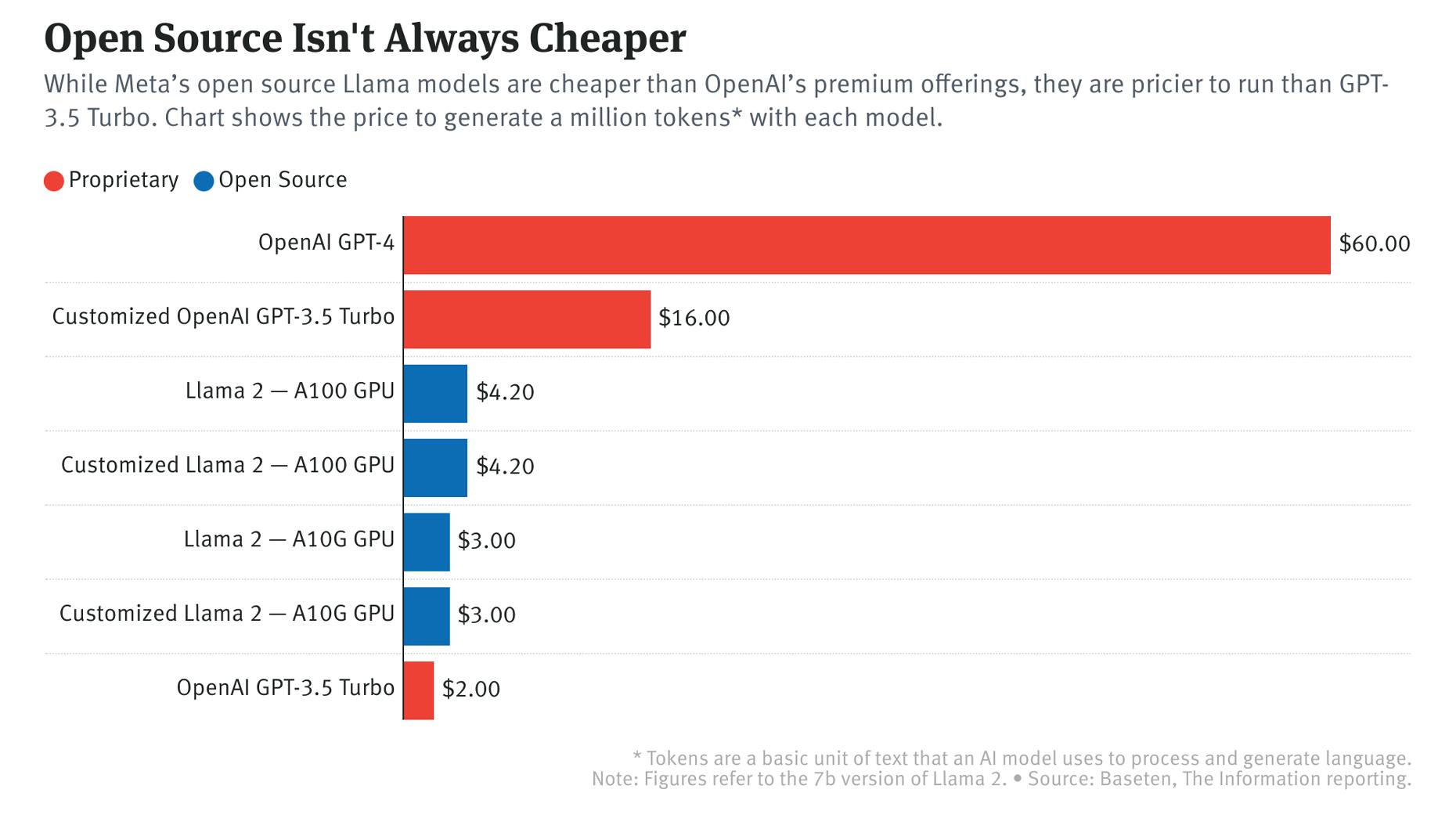So, LLaMA has able to became a favorite among developers community as top choice LLM to work with. If not the favorite, it's definitely a top pick for many. But why devs are choosing it over the many popular LLM already available? Well, for starters, it’s open-source, turning it into a playground where developers can experiment and customise freely. Unlike other AI models like Anthropic's Claude or OpenAI's GPT, which are often locked behind paywalls, LLaMA is open for anyone to try out and customize. You can even scale it up for your business.But but... if your business grows to make more than $700 million, Meta— actually the company behind LLaMA will require you to get a commercial-license. And, honestly, a tech to grow a $700 million in business is no small oppurtunity to have, and worth a shot.
"Open-source AI is the future. By making LLaMA accessible, Meta is not just advancing technology but also fostering a community of innovation."
— Tech Analyst
Open-source is a game-changer...
why, I am calling Open-source is a game-changer[1] because it allows for incredible flexibility and creativity. Developers can tweak and enhance LLaMA in ways we might not even have imagined yet. This open approach encourages a vibrant community to push the boundaries of what’s possible and there are so many independent talents who are eager to have a hands-on with LLaMA.
However, there’s a catch. Running LLaMA can sometimes be more expensive than expected. For example, using an A100 GPU to run LLaMA costs about $4.20 per million tokens. In contrast, OpenAI’s GPT-3.5 Turbo is cheaper at $2 per million tokens.
-
Hardware Costs: LLaMA requires high-performance hardware, which can add up.
-
Customization Complexity: While open-source customization is a huge advantage, it also adds layers of complexity and cost.

Even though OpenAI’s GPT-4 model is priced at $60 per million tokens, running LLaMA on different hardware setups can sometimes end up being more expensive than using GPT-3.5 Turbo.
Where's metaverse?
The reason why Facebook changed its name to Meta[2] was solely due to metaverse's first mover and as described and potrayed it was the next big thing. The idea was a virtual universe where we could live, work, and play and have our virtual avatars. But, well, things haven’t quite panned out that way. Despite a hefty investment, the metaverse is still struggling to gain traction combined with falling stock prices.
"The metaverse is still a niche market. Until VR becomes as commonplace as smartphones, it might remain a lofty dream."
— Nick Clegg, Medium Blogger
Here’s a look at why the metaverse isn’t quite hitting the mark:
-
Gear Cost: VR headsets are expensive—around $1,000 each—which makes them a hard sell for many people.
-
Technological limitations: Creating a seamless and immersive virtual world is no easy task. There are significant hurdles in both hardware and software.
-
Limited Adoption: The metaverse hasn’t really caught on yet. Only about 10% of U.S. adults own a VR headset, according to Pew Research.
"Despite Meta’s massive investments, the metaverse is still a niche market. Until VR becomes as common as smartphones, it might remain a lofty dream."
— Pew Research Center
How AI Could Enhance the Metaverse
Mark isn’t giving up on the metaverse; instead, he’s pairing it with LLaMA. Here’s how AI might boost the metaverse:
-
Better Experiences: AI could make virtual worlds feel incredibly real and immersive.
-
Simplified Development: AI could help developers create richer virtual environments with less effort.
Bold move or recovery move?
Meta’s strategy involves using AI to tackle some of the metaverse’s biggest challenges. If AI can improve the metaverse, it could become a much more engaging and practical reality.
Of course, there are risks involved:
-
Security Issues: Open-source AI can be misused for things like deepfakes and cyberattacks.
-
Resource Allocation: Splitting resources between AI and the metaverse could stretch Meta’s budget too thin.
The metaverse is still developing, and skepticism remains. Without a major breakthrough, it might stay a niche market. The reliance on VR technology, which isn’t widely adopted yet, adds to the uncertainty.
Mark’s approach is like playing a high-stakes game—investing in both LLaMA and the metaverse. If one of these bets doesn’t pan out, it could be tough. Imagine Mark at the end of a long day, looking at spreadsheets full of losses, and thinking, "Looks like we need to cut back on some expenses."
The tech world is always changing and worth the bet! Personally, I think LLaMA has the potential to shake up AI, but the metaverse still has a long road ahead mostly because it requires potential amount of support from the consumers side also.
If both LLaMA and the metaverse don't succeed, Meta might face significant financial challenges. But we know that Mark's previous ventures, which we think were genius moves tomorrow, are often labeled as madness today. Taking measured risk has always been the differentiator between a good business and a great business.